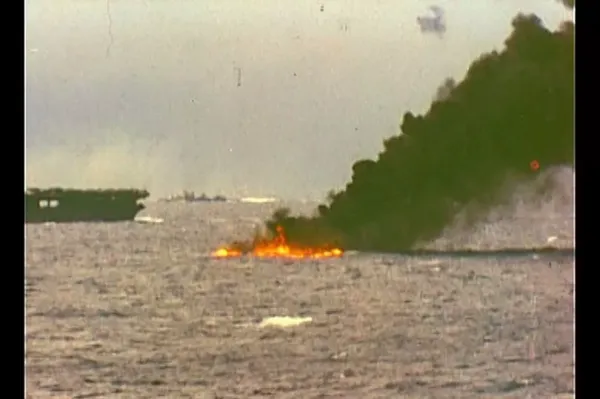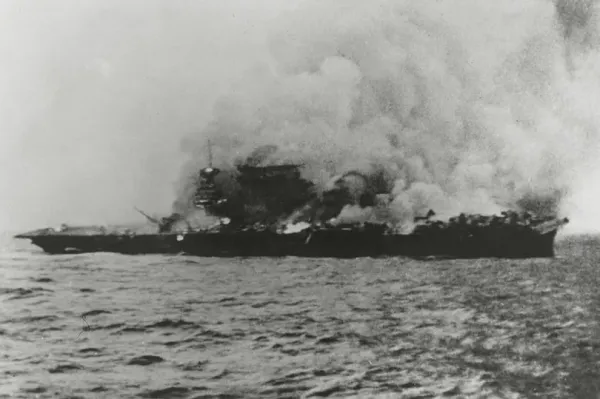
To the ordinary eye they were simply random numbers, groups of figures with little pattern or form.
But they held secret information on which the outcome of World War II depended.
Now, ahead of the 80th anniversary of VJ Day next month, the remarkable story of how codebreakers cracked the ‘impossible’ Japanese ‘super code’ - and the British officer who paved the way for the breakthrough - has been revealed.
READ MORE: 'I spent £3 on Greggs Too Good To Go Bag and was floored by what was in it'
READ MORE: Mirror's Daily Digest - five stories you might have missed today
“The Japanese were totally confident in the security of the JN-25 code; confident that it couldn’t be broken,” explains Robert Hanyok, a retired US Defence Department historian, who has taken part in a new Sky History documentary Cracking The Code - The Japanese Super Code.
But the Japanese military had reckoned without Joseph Rochfort, a maverick US naval officer with a talent for crosswords, and John Tiltman, a British Army Brigadier whose ‘teddy bear’ demeanour masked a razor-sharp mind.
Although the pair apparently never met, their skills - and those of the American codebreaking team assembled by Rochfort - changed the course of the war.

The pivotal moment came in December 1941 with the Japanese assault on Pearl Harbor. Around 2,400 US troops died. Four days later, America entered the war.
“It was absolutely devastating and completely changed the American mindset on the war,” says historian and author Clare Mulley, who has also contributed to the documentary.
The man behind the surprise attack was Japan’s formidable Admiral Yamamoto. His aim was to destroy the US Navy so Japan could access the rich resources of the South Pacific.
As a keen poker player, he also knew the value of keeping his cards close to his chest. All military communications were therefore heavily encoded.
This system, known as JN-25, carried details of Japanese naval planning and movements. For the Allies it was a goldmine of information, but deciphering it was proving impossible.
Enter Joseph Rochfort.

“Rochfort had been recommended for the code section early in his career because of his ability to solve puzzles. He was such a whizz he could almost see them intuitively,” explains US naval historian Craig L. Symonds in the programme.
He was also a gifted linguist, had a passion for Japan and little regard for the protocols around chains of command.
After hand-picking a codebreaking team, they set to work in a dusty, windowless basement at the Pearl Harbor naval base - the nerve centre for the US Navy’s signals monitoring and cryptographic intelligence unit called Station Hypo.
“The cryptologists who worked in those basement rooms were driven,” says Craig.
“They knew that if they had done so prior to December 7, it might have been possible for them to give warning of the Japanese attack.
“They were literally around the clock trying to find pieces of information that would allow them to warn their bosses of the next Japanese initiative.”
And they already had a head start.
Allied intelligence had been intercepting JN-25 messages for some time, but it was Brigadier John Tiltman who had realised that the codes contained a second layer of encryption.
Working at Bletchley Park, the Allied code-breaking centre, he was convinced each five-digit number stood for a different word with no message ever containing the same sequence of numbers twice. That meant the cypher had been scrambled a second time with groups of extra numbers inserted to confuse codebreaking attempts.
Harold Liberty is the author of a book about John Tiltman called The Forgotten Giant of Bletchley Park.
The former teacher argues the man known to his colleagues as ‘The Brig’ should stand alongside Alan Turing in terms of reputation given his work on JN-25 and contribution towards breaking both the Nazi Enigma and Lorenz coding systems.
“His mind had an amazing ability to see patterns far faster than anyone else; his understanding of JN-25 was crucial,” says Harold of the man famed for mixing and matching his Army uniform with tartan ‘trews’.
“He had fought and been decorated in the First World so didn’t suffer fools gladly but he had something of a soft centre; a ‘cuddly teddy bear’.
“Why isn’t he better known or recognised? Because he never talked about what he’d done; I think that’s why his role has been downplayed.
“But he was an extraordinary man with extraordinary abilities.”
It was those abilities which opened the door for Joseph Rochfort.
But the clock was ticking. Hong Kong and the American-controlled Philippines had been invaded and Singapore had fallen.
With Japanese encrypted messages pouring into Hypo, sometimes at the rate of 1,000 a day, there was a real fear a new attack was imminent.
By early 1942 Rochfort’s team knew how JN-25 worked but without the Japanese Navy cypher book to unlock the super code, all they had were strings of numbers.

A breakthrough came when they employed sorting machines which began to spot sequences of numbers appearing time and again. It was an indicator for the potential start of the column of numbers in the cypher book used at the second encryption level.
But without a codebook to convert numbers into words, the team could only guess at the content.
However, Rochfort also knew the Japanese had a formal and respectful approach to everything - even war. That meant the same words and phrases might be being used time and again. If context could be established then the content could be guessed.
Using a mixture of information and instinct, the team partially decoded a message indicating a Japanese carrier group had been dispatched to the South Pacific with a possible target of Port Moresby, an Allied-controlled base north of Australia.
In May 1942, Yamamoto ordered the start of the operation to take Port Moresby but, thanks to the codebreakers, US troops were lying in wait.
Neither side could claim victory in what became known as The Battle of the Coral Sea.

“But this is the first moment that the Japanese were prevented from doing something that they wanted to do,” explains Craig.
Buoyed by success, the team pressed on and soon uncovered coded messages suggesting a major offensive was in the offing with Rochfort convinced the next target would be Midway Atoll - two tiny but strategically important islands in the middle of the Pacific Ocean.
Senior US military figures were unconvinced, arguing the information - a combination of decrypts, ship movements and Rochfort’s hunch - was unreliable.They were also unimpressed by the team leader’s maverick approach - he’d frequently bypass his immediate boss and go straight to the top of US Naval Command.
More decrypted messages revealed Admiral Yamamoto had an even bigger plan - the destruction of the US fleet by enticing troops to send carriers to Midway where they would be ambushed.
Working 12 hours a day, the codebreakers knew that all the inroads they had made could be wiped out if the enemy introduced a new codebook; they would have to start the decryption process all over again.
In the end their fears were unfounded - the Japanese military machine was too stretched to do it - and thanks to the decoding skills of the Hypo team US troops remained one step ahead of the enemy.

Rochfort’s intelligence allowed the US forces to be at Midway before the planned Japanese attack. By midday on June 4, 1942, three of the four Japanese carriers were on fire and sinking; it was a disaster for the Imperial Navy and a turning point for the war in the Pacific.
“Midway is without a doubt one of the most significant naval engagements in the history of modern warfare and probably the single most important naval battle of the Second World War,” says Sky History contributor Sascha Auerbach, historian at the University of Nottingham.
In a terrible twist, Admiral Yamamoto himself fell victim to the codebreakers’ skill.
Still convinced JN-25 was impenetrable, in April1943 he boarded a flight only to be shot down by the Allies, the encoded details of his travel itinerary having been cracked.
After the war Rochfort was honoured with the Legion of Merit for his work on JN-25. Decades later a film starring Charlton Heston and Henry Fonda and detailing the Battle of Medway was made. Rochefort died a month after the movie premiered in 1976.
John Tiltman continued to serve his country long after the war ended, finally retiring in 1980. He died two years later.
Two men separated by thousands of miles but whose love of problem-solving changed the course of World War II.
The 80th anniversary of VJ Day will be marked on Sky HISTORY with a day of dedicated programming on August 15. Also available to watch now on Sky HISTORY catch up and VOD services.